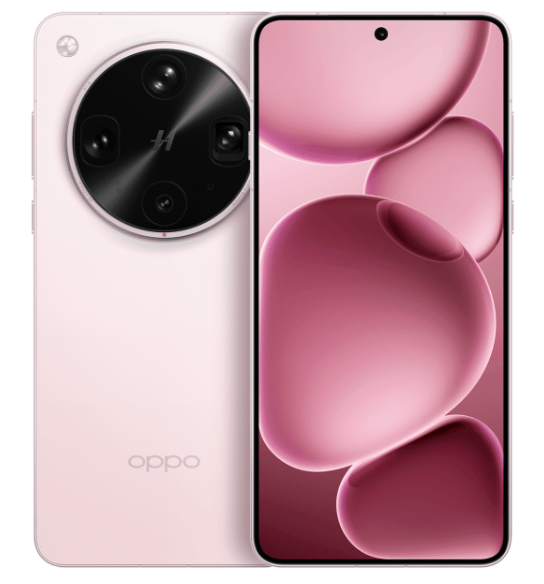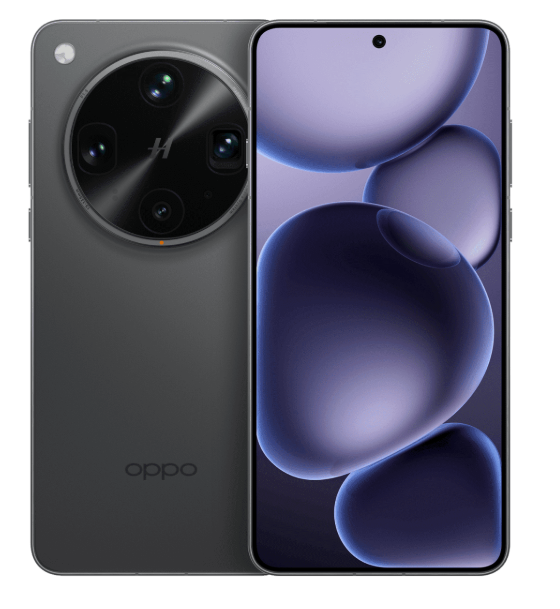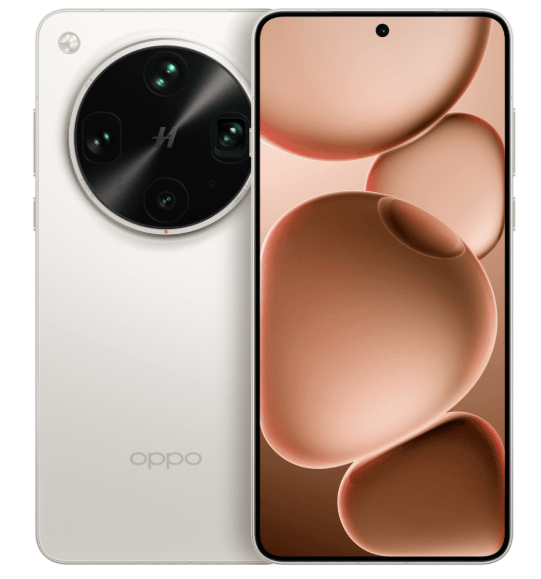Vivo X200 Ultra and OPPO Find X8 Ultra are two of the most anticipated Android flagships of the year, both pushing the limits of smartphone hardware. With similar pricing and high-end specs, choosing between them isn’t easy. This comparison highlights where each phone truly stands out, whether you care about design, battery life, camera performance, or daily use, so you can make a smarter choice based on your needs.
1. Design and Display

Build and Feel:
Both Vivo X200 Ultra and OPPO Find X8 Ultra embrace premium materials, offering polished craftsmanship and sturdy aluminum frames. Vivo leans into a slightly bulkier feel, largely due to its single-cell 6000mAh battery, making it a touch heavier in hand. On the other side, OPPO trims weight slightly and uses a refined dual-cell battery design, which enhances thermal balance during fast charging.
Both phones offer an almost identical screen-to-body ratio, but OPPO’s flatter screen versus vivo’s micro-curve design creates a distinction. The curved panel on the X200 Ultra gives it a more modern aesthetic but also makes it slightly more prone to accidental touches. OPPO’s flatter profile, by contrast, is more practical for gamers and media consumers who prefer a stable grip.
For those prioritizing ergonomics and durability in day-to-day handling, OPPO’s straightforward build feels slightly more functional, while Vivo’s more curved edges deliver a sleeker visual appeal.
Display Quality:
Both models sport 6.82-inch AMOLED QHD+ screens with 3168×1440 resolution, 1-120Hz adaptive refresh rates, and 1.07 billion color depth, which ensures sharpness and vibrancy. However, OPPO edges forward in peak brightness, offering up to 1600 nits, making it easier to use under harsh sunlight, especially for outdoor photography or map navigation.
Meanwhile, vivo offers a slightly higher sampling rate (300Hz in gaming), ensuring quicker touch responsiveness, which can be a decisive advantage in competitive gaming. OPPO’s display prioritizes visibility and contrast for everyday versatility, while Vivo’s enhanced touch response benefits users focused on fluid interaction.
Overall, OPPO’s higher brightness makes it better for varied lighting conditions, while vivo wins for tactile responsiveness.
Verdict:
OPPO Find X8 Ultra secures a slight lead in build and display usability thanks to its flatter design and higher brightness. The vivo X200 Ultra, however, appeals more to users who value immersive curves and superior touch sensitivity.
2. Specifications

Performance:
Both phones are powered by the Snapdragon 8 Extreme Edition, built on a 3nm process, paired with Adreno 830 GPUs and LPDDR5X RAM. The vivo X200 Ultra pairs this with up to 300Hz sampling and a thermal design optimized for extended gaming. OPPO, while identical in raw processing power, benefits from excellent software tuning in ColorOS, offering superior app launch speeds and smoother multitasking, especially noticeable in resource-heavy photography and editing apps.
Both phones handle 4K video editing and high-end games like Genshin Impact without throttling, but OPPO’s slight edge in sustained thermal control gives it the advantage in long-session stability.
For peak computing and real-world use, OPPO delivers a more consistent performance curve under load, while vivo leans toward burst performance with sharper UI responsiveness.
Battery and Charging:
Vivo X200 Ultra packs a 6000mAh single-cell battery with 90W wired and 40W wireless charging. OPPO counters with a dual-cell 6100mAh setup, 100W wired, and 50W wireless charging. The dual-cell structure in OPPO not only charges slightly faster but also generates less heat, promoting longer battery health.
Vivo’s single-cell design, while robust, tends to get warmer under 90W load. Additionally, OPPO offers more charging protocol flexibility, supporting PPS, PD, and QC standards, making it friendlier to third-party accessories.
OPPO’s efficient power management and faster wireless charge tilt the scale toward it, especially for users prioritizing longevity and top-up speed.
Verdict:
Both phones deliver flagship-grade performance, but OPPO’s thermal management and charging flexibility position it as a more reliable everyday workhorse. Vivo’s single-cell approach offers marginally longer screen-on time per charge, but OPPO wins in recharge speed and safety, especially under varied conditions.
3. Camera

Main and Secondary Lenses:
Vivo X200 Ultra boasts a 50MP main, 50MP wide, and an impressive 200MP periscope lens, designed for ultra-high digital zoom up to 105x and excellent OIS stabilization. The OPPO Find X8 Ultra, while sticking to a 50MP quad-camera setup, features a standout optical system with multi-lens modules that prioritize consistent image quality across focal lengths rather than extreme zoom. OPPO also offers more cinematic video modes and better 4K slow-motion stability.
For pure photographic detail, especially long-range, Vivo’s 200MP periscope delivers unmatched clarity at a distance. Yet, OPPO provides more natural colors and a balanced dynamic range in complex lighting. Users valuing extreme zoom and creative framing will find vivo superior, while OPPO suits those who prefer accurate color science and video versatility.
Selfie Camera:
Vivo equips a 50MP front camera with advanced modes including 4K video recording, whereas OPPO opts for a 32MP sensor with 4K support and reliable autofocus. Despite the lower megapixel count, OPPO’s front camera leverages superior tuning for facial textures and lighting, making it particularly strong for video calls and social media-ready shots.
Vivo’s 50MP front sensor favors high-resolution selfies and greater cropping flexibility without loss of detail, especially useful for vloggers. For casual portraits, OPPO delivers more flattering results straight out of the camera, but Vivo holds the advantage for higher resolutions.
Verdict:
Vivo X200 Ultra excels in zoom and megapixel-driven photography, appealing to photographers who prioritize detail. OPPO Find X8 Ultra shines with color accuracy, consistency, and versatile video modes, offering a more balanced and refined camera experience for both photos and cinematic clips.
4. Pricing

Both devices are priced nearly identically, around €775-€780. Given their shared Snapdragon 8 Extreme chip, LPDDR5X RAM, and UFS4.1 storage, the pricing appears competitive for the hardware. Vivo packs in a higher megapixel periscope, while OPPO focuses on balanced camera modules and more refined charging tech.
For buyers prioritizing extreme photography, Vivo’s 200MP periscope camera justifies its cost. Meanwhile, OPPO offers a more all-rounded package for the same price, especially when factoring in faster charging, superior software stability, and advanced satellite communication (on certain models). The value proposition leans toward OPPO for everyday dependability, while Vivo appeals more to camera hobbyists.
5. Conclusion

Both phones share standout features like Snapdragon 8 Extreme chipsets, 16GB RAM, and AMOLED QHD+ displays, but each has unique strengths. Vivo’s 200MP periscope zoom and 105x digital zoom set it apart for photography enthusiasts who require unmatched magnification. OPPO, however, integrates satellite communication (Tiantong system) for emergency calls and texts, plus broader NFC functions for eID, transit, and digital wallets.
OPPO also edges out with its dual-cell battery and higher wireless charging rate, ensuring better longevity. Vivo’s edge lies in optical reach and slightly more aggressive game-mode optimizations, whereas OPPO offers a better-rounded daily experience with future-proof features.
Final Verdict:
Vivo X200 Ultra is designed for photography lovers and power users who value high zoom, strong detail retention, and an eye-catching curved screen. OPPO Find X8 Ultra counters with a more polished balance: better thermal control, broader connectivity (including satellite comms), and more consistent camera color science.
Both are excellent, but OPPO edges out as the more versatile flagship.
Read More:
- How Vivo X200 Ultra Is the Closest a Phone Has Come to a Real Camera
- Vivo X200s vs Ultra: Which is the best flagship for you?
- Oppo Find X8 Ultra vs iPhone 16 Pro Max: Camera, Battery & Specs Breakdown







